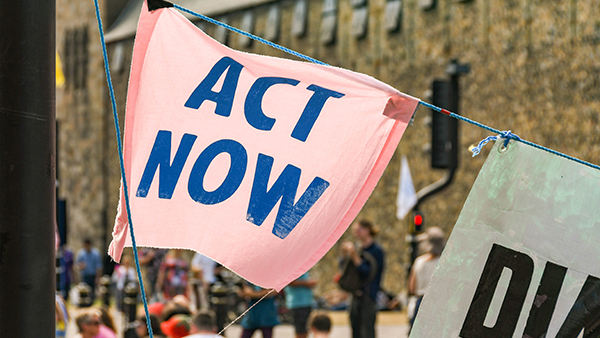In my previous post I offered some key points about the idea of efficacy that have emerged from our work with Pearson, the global education company which is committed to ensuring that all its products and services ‘help people make progress in their lives through learning’. Today I want to explore the idea of different efficacy paradigms and how they might be combined to maximise insight and impact.
In our seminars with Pearson we made a distinction between what we termed ‘efficacy one’ and ‘efficacy two’. We can distinguish these ideas in many ways as the table below suggests:
|
Efficacy one |
Efficacy two |
|
Isolating cause and effect |
Mapping the system |
|
Seeks replicable change models |
Sees change as context dependent |
|
Speed of change |
Sustainability of change |
|
Trying to keep it simple |
Appreciating complexity |
|
Assumes/demands agreement about goals |
Acknowledges and works with different interests |
|
Quantitative data |
Quantitative and qualitative data |
There are many ways of describing this intuitively recognisable dichotomy and mine is neither nuanced nor exhaustive. More useful may be the insight that these two efficacy paradigms should be seen, more often than they are, as complementary and even – in effective organisations – mutually dependent. As the final report of the Pearson seminars suggests:
Might it be, for example, that Efficacy Two thinking is an intellectual precursor to Efficacy One in that we need an appreciation of and relationship to the larger system we are seeking to influence before we identify specific change programmes? Whereas – in relation to action – Efficacy One interventions generally need to precede Efficacy Two strategies as the former provide the sense of agency necessary to believe the latter can be attained. Similarly, thinking of public service institutional performance, is it that Efficacy One provides the best tools to move from ‘failing’ to ‘good’, but that Efficacy Two provides the only route from ‘good’ to sustained ‘outstanding’?
In the time since the end of the Pearson project I have been thinking more about the RSA’s model of change coming up with the idea of ‘emergent impact’. This is an approach which is based on developing a model of change and a wide toolkit of interventions and then using iterative and agile processes to learn quickly, pursue emerging opportunities and change course whenever necessary.
So, a new table has three columns:
|
Efficacy one (technical) |
Efficacy two (holistic) |
Efficacy three (tactical) |
|
Isolating cause and effect |
Mapping the system |
Developing a theory of change |
|
Seeks replicable change models |
Sees change as context dependent |
Flexible toolkit |
|
Speed of change |
Sustainability of change |
Seizing change opportunities |
|
Trying to keep it simple |
Appreciating complexity |
Maximising agility |
|
Assumes/demands agreement about goals |
Acknowledges and works with different interests |
Builds change coalitions |
|
Quantitative data |
Quantitative and qualitative data |
Whatever data helps drive the process |
Again, the interesting questions are less about the differences between these paradigms but the challenge of making them work together (my regular readers will have noticed the way this schema has echoes of what I have called ‘three powers theory’; efficacy one being hierarchically inclined, efficacy two solidaristically inclined and efficacy three individualistically inclined).
In terms of overall organisational or strategic effectiveness, leaders should seek to combine the great strengths of each of these three models of efficacy while always recognising the inevitable tensions between them and their advocates.
Our Pearson seminars looked at school standards and employment services but let’s instead think of an organisation seeking to reduce obesity in a population group.
Starting with efficacy one we would want to understand the links between particular behaviours and obesity outcomes and we might want to pursue interventions that would target these behaviours, so for example ‘nudge’ style interventions like reorganising cafeterias so salad is close at hand and puddings hard to reach or, more controversially, a ‘fat tax’.
Efficacy two advocates might support such interventions, although they would be alert to the possibility of unintended consequences such as a public backlash against paternalism or people replacing fat with sugar, but the efficacy two approach would invite us to look at the whole ‘obesogenic’ food system. Eating behaviours and health outcomes it would say are the consequence of a complex system involving social factors (norms, values), economic factors (resources, incentives) and institutional factors (interests, power). An efficacy two approach would seek through collaboration, multiple interventions and continuous dialogue to shift to a less obesogenic culture and system.
An efficacy three advocate might share the system-wide ambition of efficacy two and the desire for fast tangible progress of efficacy one. Their approach would be to plot a route to drive change across the system and to have at hand a range of resources and skills which might be useful on the journey. Then they might try something out, maybe a social media campaign targeted at a planning application for a fast food outlet next to a school, a piece of engaging content (say a survey of young people’s eating habits) or a design workshop (in which various groups work together on designing fitness into employment). Then, based on the impact of one of those interventions, they would get a better feel for barriers and opportunities. They would then decide the next step; a tactical retreat, a reorientation of the line of attack, calling up reserves for one big push etc.
While there is no intrinsic reason why these three paradigms cannot be melded - indeed my argument is that a highly effective organisation will do just that - we shouldn’t underestimate the challenge involved. Efficacy two thinkers will tend to be suspicious of what they see as the top-down solutions of efficacy one thinkers, while conversely, the latter will find the former ponderous and over-complicated in their approach. They may both look on efficacy three approaches as random and risky.
In the final post in this series I will explore how organisations committed to maximising efficacy for public good might summon up and combine the best of all these approaches.
Related articles
-
The public are ready to go further and faster on net zero
Anthony Painter
The public are ahead of policy-makers and, indeed, most of the business world. COP26 is an enormous opportunity to catch up. Global leaders should take it.
-
Can progressives ever stop the in-fighting?
Matthew Taylor
Biden's victory has caused the left and moderates to fracture again.
-
Can President Biden bring America together again?
Anthony Painter
There is a long road ahead for the new president.




Be the first to write a comment
Comments
Please login to post a comment or reply
Don't have an account? Click here to register.